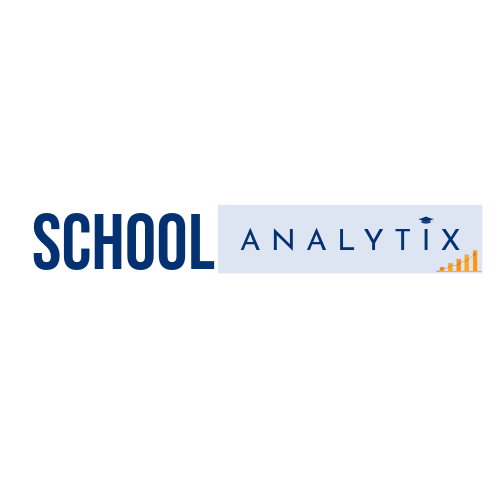In the ever-evolving landscape of education, the quest for enhancing student performance remains a primary objective for educators and administrators alike. The traditional methods of assessing student progress, such as standardized tests and report cards, are evolving into more dynamic and data-driven approaches. One such approach gaining prominence is the utilization of comprehensive student assessment dashboards powered by tools like Power BI, which leverage Student Information System (SIS) data to provide educators with actionable insights into student performance.
The Evolution of Student Assessment
Historically, student assessment has been primarily focused on evaluating academic knowledge through standardized tests and grades. While these traditional assessment methods offer valuable insights, they often provide a limited view of student progress and fail to capture the full spectrum of learning outcomes, including non-cognitive skills and socio-emotional development.
Recognizing the limitations of traditional assessment practices, educators are increasingly turning to more holistic approaches that incorporate multiple measures of student achievement. This shift is fueled by advancements in technology, the proliferation of digital learning tools, and a growing emphasis on personalized and competency-based education.
The Power of Student Assessment Dashboards
A comprehensive student assessment dashboard serves as a centralized platform that aggregates and visualizes a wide range of student data, including academic performance, attendance, behavior metrics, and socio-emotional indicators. By harnessing the power of data analytics and visualization tools like Power BI, educators can gain deep insights into student learning trends, identify areas of strength and improvement, and tailor instructional strategies to meet individual student needs.
Academic Performance Analysis:
One of the core functionalities of a student assessment dashboard is the analysis of academic performance data. Through interactive visualizations and drill-down capabilities, educators can track student progress across various subjects, assignments, and assessments. They can identify trends, patterns, and outliers, allowing for timely interventions to support struggling students and challenge high achievers. Additionally, educators can monitor mastery of learning objectives and standards, enabling targeted instruction and remediation as needed.
Attendance and Engagement Monitoring:
Attendance and student engagement are critical factors that influence academic success. A comprehensive student assessment dashboard integrates attendance data from the SIS, providing real-time insights into student attendance patterns and trends. Educators can identify students with chronic absenteeism or truancy issues and implement targeted interventions to improve attendance rates. Moreover, by analyzing engagement metrics such as participation in class activities and completion of assignments, educators can assess student motivation and involvement in the learning process, fostering a positive and supportive learning environment.
Behavior and Socio-Emotional Insights:
In addition to academic performance, a holistic student assessment dashboard incorporates data on student behavior and socio-emotional well-being. By tracking disciplinary incidents, social-emotional assessments, and student surveys, educators can gain a deeper understanding of students’ social and emotional needs. This enables the implementation of proactive interventions to address behavioral challenges, promote positive social interactions, and support students’ socio-emotional development. Furthermore, educators can identify correlations between academic performance and socio-emotional factors, informing holistic approaches to student support and intervention.
Personalized Learning and Intervention:
One of the key benefits of a comprehensive student assessment dashboard is its ability to support personalized learning and targeted intervention strategies. By analyzing individual student data and identifying specific areas of strength and weakness, educators can tailor instruction to meet the unique needs and learning styles of each student. Whether through differentiated instruction, small-group interventions, or personalized learning plans, educators can leverage data-driven insights to optimize student learning outcomes and foster academic growth.
Implementing a Student Assessment Dashboard: Best Practices
While the potential benefits of a comprehensive student assessment dashboard are vast, successful implementation requires careful planning, collaboration, and attention to best practices. Here are some key considerations for implementing a student assessment dashboard effectively:
Data Integration and Quality Assurance: Ensure seamless integration of data from the SIS, learning management systems, and other relevant sources. Conduct regular data quality checks to ensure accuracy, completeness, and consistency of data.
Stakeholder Engagement: Involve educators, administrators, and other stakeholders in the design and development process to ensure that the dashboard meets their needs and aligns with organizational goals.
User-Friendly Design: Design the dashboard with usability and accessibility in mind, incorporating intuitive navigation, interactive visualizations, and customizable features to accommodate diverse user preferences and needs.
Professional Development: Provide ongoing training and professional development opportunities for educators to build their data literacy skills and maximize the utility of the dashboard for instructional planning and decision-making.
Privacy and Security: Implement robust data privacy and security protocols to safeguard sensitive student information and ensure compliance with relevant regulations such as FERPA.
Continuous Improvement: Regularly solicit feedback from users and stakeholders to identify areas for improvement and enhancement. Continuously iterate and refine the dashboard based on user feedback and evolving educational needs.
Conclusion
In conclusion, a comprehensive student assessment dashboard powered by tools like Power BI represents a transformative tool for optimizing student performance and promoting educational equity. By leveraging data analytics and visualization technologies, educators can gain actionable insights into student learning, attendance, behavior, and socio-emotional well-being, enabling targeted interventions and personalized instruction. However, successful implementation requires careful planning, collaboration, and a commitment to data-driven decision-making. By embracing the potential of student assessment dashboards, educational institutions can empower educators, engage students, and drive positive outcomes for all learners.
Leveraging SchoolAnalytix for Expert Guidance
While PowerBI offers powerful analytics capabilities, maximizing its potential for student retention requires expertise in data visualization, predictive modeling, and educational analytics. This is where SchoolAnalytix comes into play. As a leading provider of data analytics solutions for educational institutions, SchoolAnalytix offers a wealth of expertise and resources to support institutions in their quest to optimize student retention.
By partnering with SchoolAnalytix institutions gain access to a team of experienced data scientists, educators, and analysts who specialize in leveraging PowerBI for educational purposes. From dashboard design and customization to predictive modeling and intervention strategies,
SchoolAnalytix provides end-to-end support tailored to the unique needs and goals of each institution.









